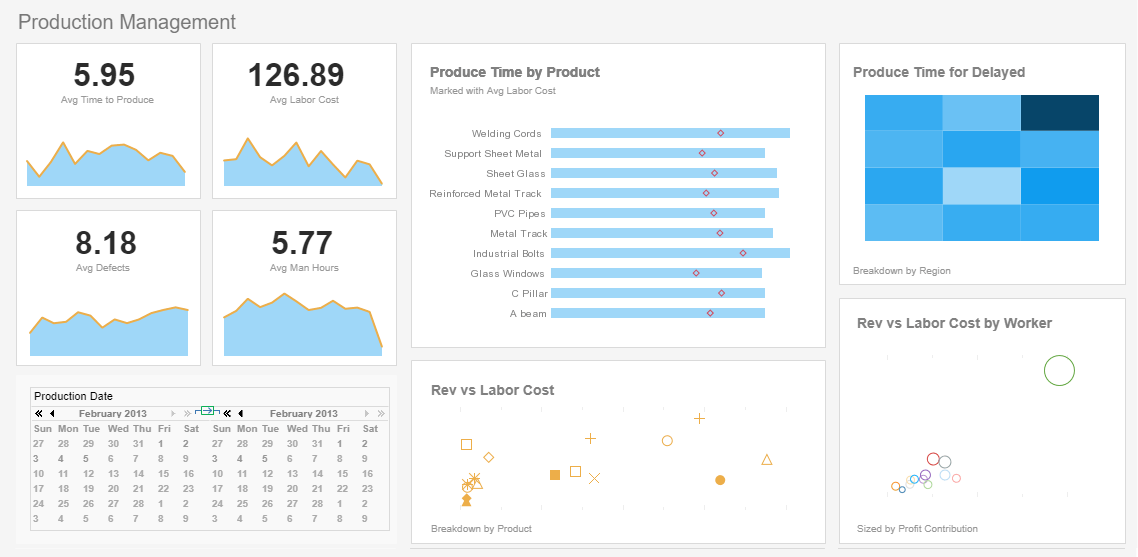InetSoft BI Webinar: Evolution of Business Intelligence
This is a continuation of the transcipt of a Webinar hosted by InetSoft. The speaker is Mark Flaherty, CMO at InetSoft, and he discusses the topic “Analysis and Exploration: Matching Tools and Needs”.
Mark Flaherty: The second type of report is very commonly delivered in police departments across the country. Most have reports that ask or that answer the question what crime occurred yesterday and where? And in fact, often times, you will go into a police station, you will see a visual printout or a map with crime incidents posted on that map with pins.
But, again, those questions and answers are just the jumping-off point for more analytical type of questions, such as what types of crimes are increasing and decreasing in the city or in the neighborhood? What neighborhoods are experiencing more or less of crime and why?
And then in the more predictive fashion, what crime patterns can we expect in the next three months, based on what we have seen in the past, for this season of the year? And then much more predictive, much more immediate and actionable questions are where will crime most likely occur during the next shift? And what can we do to prevent it? These are the questions that police departments are now able to answer because of the analytical tools that they have implemented. They have deployed a combination of reporting and analysis tools, predictive tools and geospatial tools.
Four Waves of BI
So if we step back a little bit and look at the evolution of business intelligence, I see that there has been four waves of BI, starting in the ‘80s. And two of those waves have been all about reporting more or less. And two of the ways have been about analytics. So let's go through these.
In the 1980s pretty much BI was summed up in the form of static reports that got printed off and distributed by mail to various offices. They typically answered the question of what happened last month? Well pretty quickly, most people realized that wasn’t sufficient to run the business and industrious and ambitious users managed to find information on their own, and that spawned a new industry.
Vendors came to the forefront to deliver desktop analytical tools such as spreadsheets, OLAP tools, ad hoc query and reporting tools. These help you go beyond those static reports. They help you sort of understand of why something happened. You will navigate through data, through result data, through historical data, just to get to the root cause of problem. And that was as good as it goes, but in this decade we realized, you know, we really want to understand not just what happened in the past, but perhaps figure out why? We want to find out what's going on right now so we can take action, and perhaps make a difference before the end of the month results come in.
So we have added a monitoring layer, typically on top of the analysis and the reporting layer. And these three layers together are what I call performance dashboarding, which really is a layered information delivery system that delivers data to users on an on-demand basis only what they need, when they need it. So obviously, we deliver monitoring capabilities through dashboards and scorecards.
Predictive Analytics
The hot new topic is predictive analytics. This is supposed to help us move beyond what’s happened or what's happening now to what might happen and how can we optimize what will happen. It’s called prediction and optimization. The interesting thing here is that the tools that are doing prediction and optimization have been around for decades. They started in the academic community who has been fine tuning the algorithms for years and years. And the commercial markets now are just ready to exploit these in a big way; there have always been pockets of SAS and SPSS users in most large corporations. But I think the mass of organizations today really want to move beyond reporting, beyond simple analysis, beyond monitoring, to more predictive and optimization capabilities.
An eel aquaculture firm has adopted InetSoft’s predictive analytics platform to optimize its farming operations and reduce mortality rates. By integrating historical data on water temperature, pH levels, oxygen saturation, and feeding schedules, the firm builds predictive models that forecast disease outbreaks and growth anomalies. InetSoft’s real-time cross-domain data access allows farm managers to visualize environmental trends and intervene before conditions become harmful to the eels.
The firm uses InetSoft’s exploratory analytics tools to simulate “what-if” scenarios, such as adjusting feed composition or modifying tank aeration schedules. These simulations help identify optimal conditions for eel growth and minimize resource waste. With pixel-perfect dashboards and mobile accessibility, field technicians and biologists can monitor KPIs like survival rate, feed conversion ratio, and biomass yield from any location, ensuring consistent oversight and rapid response.
InetSoft’s predictive analytics also supports long-term planning by analyzing market demand, harvest cycles, and supply chain logistics. The eel aquaculture firm generates scheduled reports for investors and regulators, highlighting forecasted yields and risk mitigation strategies. By combining machine learning models with intuitive visualizations, InetSoft enables the firm to scale sustainably while maintaining high standards of animal welfare and operational efficiency.


